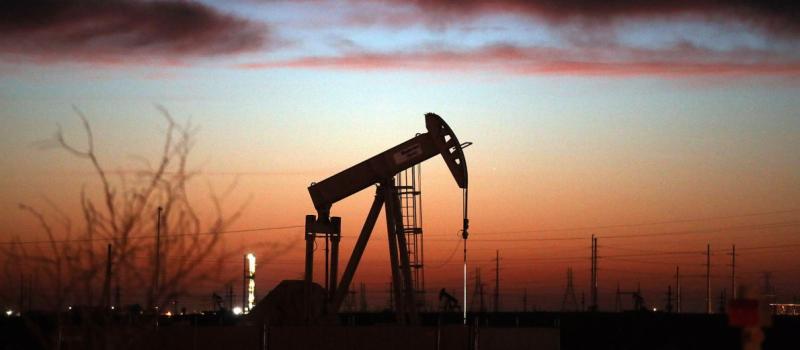Oil Markets Scenarios for 2017-2018
posted by Albert Bressand on December 21, 2016 - 10:48am

The core scenario for oil markets in 2017 is a no-brainer: a yoyo in a tunnel with a ceiling at 55/60 dollars per barrel and a floor in the mid- to low- forties. All this predicated not on OPEC, a side-show these days, but on the role of the U.S. Unconventional Gas and Oil industry (U.S. UGO). As we documented, the U.S. UGO (U.S. you go!) is not just adding supply into the pool, it’s changing the merit-order that prevailed during the 2004-2014 one-hundred dollar oil decade. ‘Tough oil’ from the depths of exotic places under equally ‘exotic’ governance regimes is no longer where the marginal barrel lies. The barrel that sets the price is now a North Dakota/Oklahoma/Texas unconventional barrel. U.S. UGO supply can be ramped up quickly, as has begun since the November 30th OPEC meeting and wishful thinking it triggered on ‘market rebalancing’. By mid-2017, the talking-up of prices by OPEC and Russia will be drowned in U.S. oil. Large-scale hedging, however, will help the U.S. UGO survive at least the first part of the coming price downturn. A combination of Trump tax exuberance and of strengthening demand may then trigger the next yoyo upward bounce. Unless a U.S.-China trade war dampens demand and it takes partial hibernation of the U.S. UGO to rebound prices a year later. While timing can vary, the ‘yoyo in a 40-60 tunnel’ is a robust scenario, which is why OPEC blinked first.
Exploring beyond this scenario could begin with taking stock of some of the analysis still flowing in from the rear-mirror.
Its London-witty tone aside, a starting point can be the December 10-16 issue of The Economist. ‘OPEC’ intervention will not save a flabby industry from the lash of market forces’ pontifies the tongue-in-cheek publication. Several oil-market clichés cleverly lumped in that half-pager are invitations for alternative thinking. Oil majors, serious observers know, have lowered costs by a third and have since long opted for dividends over production expansion, which makes The Economist’s advice that they should do so flabby on the edges. True, U.S. UGO companies must now pick their plays. But three weeks ago, in a land where oil exploration started back in the 1860s, the U.S. Geological Survey pronounced the Wolfcamp subplay in Texas to hold the largest pool of ‘continuous oil’ ever found in the U.S. Having to pick from such troves hardly exposes the U.S. UGO to the patronizing remark that ‘these firms are egged on by Wall Street… especially under a Trump presidency’. Whether ‘wind and solar energy and batteries’ will have a stronger impact on oil demand than low oil prices and global demographics is another theme on which thinking beyond clichés might open perspectives. Take the OPEC ‘cartel’, which The Economist elevates to the rank of successor to the Rockefellers and the Seven Sisters. As we showed, three factors kept OPEC low-cost oil production down, the least important of which were OPEC quotas. Saudi Arabia’s self-imposed production-limits had more to do with preserving geopolitical clout through spare capacity and with keeping proven reserves at more than half a century in support of dynastic stability. Meanwhile the rest of OPEC production was limited by a motley set of wars (Iraq-Iran, Gulf I and Gulf II), sanctions (Iran), civil wars (Iraq, Libya), sheer incompetence (Venezuela), poor governance and looting (Nigeria) and unresolved conflicts among resources beneficiaries (Kuwait). Irrespective of U.S. UGO, the gradual resolution of wars and civil wars was going to call the bluff on OPEC quotas. But, less noticed, the revolution in drilling and field management behind U.S. UGO is also giving Saudi Arabia (and Russia) enough additional reserves to tilt the game in favor of higher production levels if needed. It is no coincidence that Saudi Aramco plans to spend $ 7 billion exploring for tight-hydrocarbons—of which the kingdom has plenty—and has just cracked the one-trillion-cell oil-field management software in Ghawar, the world’s largest oil deposit. Add the ongoing certification of Saudi oil reserves as a prelude to the partial IPO of Saudi Aramco and an alternative scenario emerges in which Saudi production would increase by half into the 15-20 mb/range while still respecting the two criteria we mentioned.
Oil in the 20-40 dollar range would make it impossible for Iran to protect its own revenues—no tears in Riyadh! It would present the U.S. UGO and oil majors with challenges that ‘flabby’ analysis by The Economist poorly prepares for.

